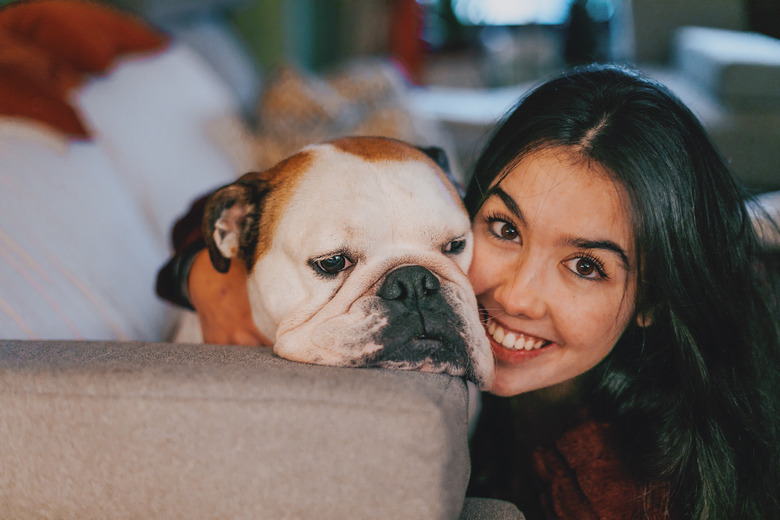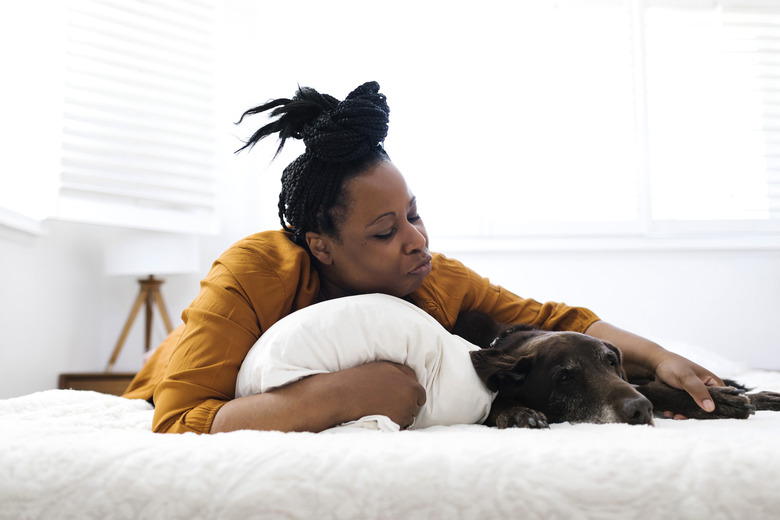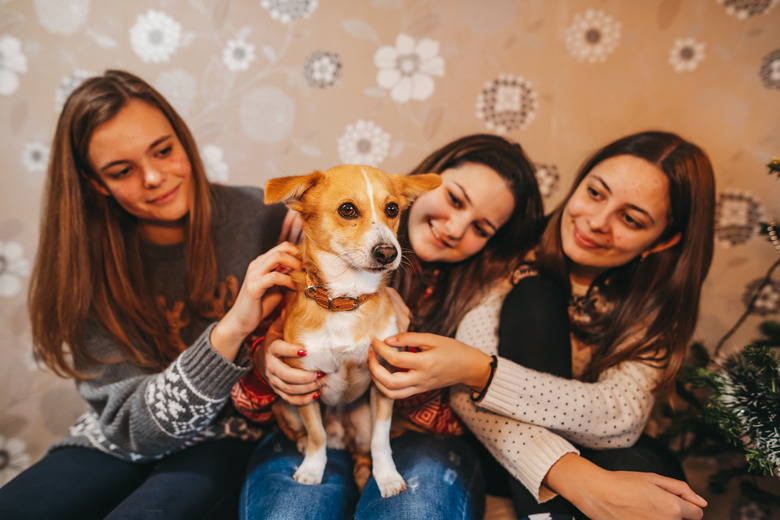Is It Possible To Pet A Dog Too Much?
No one likes being smothered by another person, and even the cuddliest and most affectionate people have their limits. Our canine friends can feel the same way, and likely show it through their body language, which is our responsibility to understand and read. Touching dogs has long been proven to be therapeutic for people, but is it possible to pet a dog too much? That will depend on the dog, and the best way to love your dog is to understand her invites and limitations.
Both humans and dogs bond through touch
Both humans and dogs bond through touch
Why do dogs like being petted? The short answer to this question is as simple as it is satisfying: because it just feels good. According to The New York Times, research conducted by Arizona State University psychologist Clive Wynne, showed that the part of the brain known as the reward center, or hypothalamus, lights up the same way for praise from people as it does for food. For both dogs and people, being touched triggers the release of pleasure hormones, and allows us to build bonds with the persons, or canines, those moments are shared with.
Reading dog body language
Reading dog body language
While we may not receive verbal confirmation that our dog is enjoying being petted, there are numerous body language cues, some obvious and others more subtle, that can help us understand how our canine is feeling. Tail wagging is one such way our dogs communicate with us, and although it's commonly believed to mean "I am happy," the American Kennel Club states that the tempo of the wag can spell out whether this is true. Tail wagging simply means that a dog is in a state of emotional arousal, which can mean a number of things — excitement and affection are common examples, but arousal can also signify frustration or anxiety. Generally, slower, more breezy wags are associated with the former, while quicker movements can mean that your dog is feeling overwhelmed.
Body posture can also send clear signals. Usually, a crouching dog is believed to be in a fear state, while one who offers her belly for a hearty scratch is relaxed and trusting (assuming these solicitations aren't accompanied by excitement peeing, which can indicate submission.) Finally, much like a human, a dog's face can really tell a story, and becomes easier to decipher over time as each dog is different. Soft, relaxed eyes often mean that a dog is calm, and brief moments of eye contact can help the two of you build bonds based on trust. If you notice the whites in a dog's eyes, known as whale eye, or catch a glimpse of front teeth or gums, often known as "submissive smiling," your dog may be feeling nervous, so it's best to give her some space.
Petting can accidentally reinforce behaviors
Petting can accidentally reinforce behaviors
Petting a dog is an important part of bonding, and something we should offer to our pets and engage in often. Sometimes, however, petting can do unintended harm, especially when it's offered after undesirable or "bad" behavior, as this may reinforce by rewarding your dog with praise. Perhaps you've seen examples of this already — a dog inside of a home barks at someone outside as they walk past a window, so their guardian pulls them close, pets them on the head and neck and tells them to calm down or shush. While we may be telling them to stop, verbally, a dog might associate being held, attended to, and petted in these scenarios with comfort and even praise, which can cause an increase in behavior, or at the very least, will do little to stop it.
If you notice that your dog responds well to praise, and regards it as a reward much like a food treat, you can use petting for reinforcing good behavior by petting your dog after he's exhibited a desirable behavior, rather than scold or punish him for doing what you wish he wouldn't.
In conclusion
In conclusion
Petting is an important part of developing a bond between canines and their human guardians, and shouldn't be withheld from our companion animals. To understand whether your dog is enjoying being petted, look out for body language cues, like relaxed eyes or a slow wagging tail. Signs of stress may also be communicated through a dog's body and face, so be sure to notice how your dog reacts to being handled over time, and stop if she is giving off clear stress or fear signals. If your dog becomes pushy or insistent, it may be time to set important boundaries around your personal space and time.


